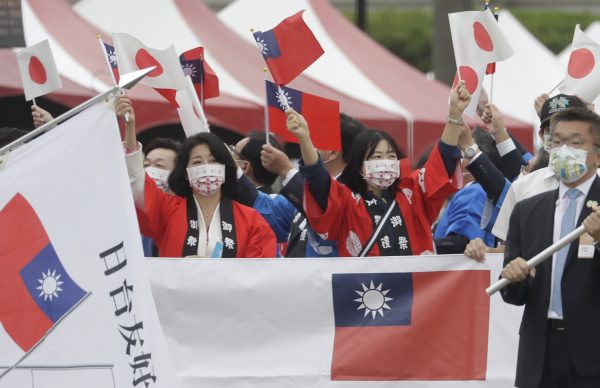
This year is the 50th anniversary of the normalization of diplomatic relations between Japan and China, but it is also the 50th anniversary of the termination of diplomatic relations between Japan and Taiwan. On September 29, 1972, Japanese Prime Minister Tanaka Kakuei, having achieved a normalization of diplomatic relations with China with the issuance of the Japan-China Joint Statement in Beijing, sent a cable to Taipei. In response, the government of the Republic of China (ROC, or Taiwan) broke off relations with Japan but indicated that it would maintain some ties, out of consideration of those Japanese people who remained supportive of the ROC.
As a result, in December of the same year, the Japan-Taiwan Exchange Association on the Japanese side and the East Asia Relations Commission (currently the Taiwan-Japan Relations Association) on the Taiwanese side were established as civil organizations, maintaining civil relations on economic and cultural matters. Keeping economic and cultural relations going after a break in diplomatic relations has come to be known as the “Japanese model.” The reason why the ROC accepted this arrangement is that after Chiang Ching-kuo became president in the same year, there was a change in policy to maintain relations with parties even after ending diplomatic relations with them.
Even before the official break in diplomatic relations, Japan and Taiwan’s relationship had been gradually shifting from the mid-1960s to one centered on the economy. Emblematic of this was Japan’s economic assistance to the ROC after the U.S. ended its aid. Economic aid was cut after the break in diplomatic relations, but direct investment in Taiwan from Japan, then experiencing its period of high economic growth, actually expanded after the break. Native Taiwanese “Nihongo-jin” (Japanese speakers), who had learned the language under Japanese colonial rule, supported relations between Japanese companies and Taiwanese society.
However, this is not to say that Japan-Taiwan relations have been consistently close since the end of diplomatic relations. In the 1970s and 1980s, in fact, Japanese domestic sentiment toward Taiwan was never good, and the Kuomintang (Chinese Nationalist Party) government was basically continuing its “anti-Japanese education.” A large number of Japanese companies did enter Taiwan, and even though economic relations became closer, it was still conservatives considered “pro-Taiwanese” who mostly associated with Taiwan.
This situation changed dramatically in 1989. First, the Tiananmen Square protests and massacre saw the percentage of Japanese with a favorable attitude towards China plummet from 70 percent to around 5 percent. Around this time, the influence of the Japan Socialist Party in Japanese politics waned as the so-called 1955 System collapsed, and the Japan-China friendship movement retreated. Meanwhile, Taiwan, which had made its own rapid economic gains thanks to its development strategy and economic ties with Japan, began to democratize from the late 1980s, with the first presidential election being held in 1996. This development and democratization transformed its relations with Japan. At the time, just as Japanese were beginning to see China as a threat Taiwanese President Lee Teng-hui was active in his public diplomacy toward the Japanese people, many of whom were reading Shiba Ryotaro’s “Taiwan Travelogue” and Kobayashi Yoshinori’s “Taiwan Theory.” Interest in Taiwan surged, spreading from conservative circles to broader Japan society.
Japan-Taiwan relations received another boost following the Great East Japan Earthquake in 2011. Japanese sentiment toward China had already deteriorated with anti-Japanese demonstrations taking place in the latter country around 2005, and although feelings toward Taiwan was already positive, Japanese were very moved when an impressive 25 billion yen was donated from Taiwan after the earthquake. In fact, China also provided Japan with support, but it failed to generate the same sentiment. Since then, Japanese public opinion has strongly favored a positive policy toward Taiwan, leading to fisheries and tax accords, and even more active exchange through an open skies agreement.
When he returned to government in late 2012, Japanese Prime Minister Abe Shinzo sought to build good relations with his Taiwanese counterparts, the Kuomintang’s Ma Ying-jeou and the subsequent government of the Democratic Progressive Party’s Tsai Ing-wen. Initially, negotiations on a Japan-Taiwan free trade agreement stalled on a Taiwanese referendum that blocked imports of food from Fukushima and other areas, but when the Taiwanese side declared that it would look to join the Comprehensive and Progressive Agreement for Trans-Pacific Partnership and when the ban on food imports from Fukushima expired, the Tsai administration took steps to remove the hurdle. Finally, amid recognition of the “Taiwan emergency,” considerable advances have been made dialogue and cooperation between Japan and Taiwan.
China is naturally becoming increasingly wary of these close Japan-Taiwan relations. Beijing protested vociferously when Taiwan sent a representative to the funeral of former Prime Minister Abe. On September 29, coinciding with the 50th anniversary of the break in diplomatic relations, Taiwan once again allowed visa-free travel from Japan. This is another policy that resonates with Japanese society. The quarantine period is likely to be lifted in October. China’s protests are hardly surprising, but Beijing needs to understand that Taiwan’s policies appeal to Japanese, and perhaps take a long, hard look at its own policies toward Japan.
Japan and Taiwan, 50 Years Later
Source: Frappler

0 Comments